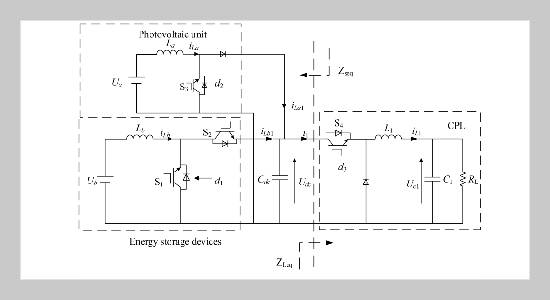DC Converter Model Predictive Control Circuit Diagram
DC Converter Model Predictive Control Circuit Diagram High Current DC to DC Boost Converter Circuit. The following circuit is designed to convert this 5-12 V input to a variable 15-30 V output. The converter is based on a Texas Instruments L497A, which is perfect for building a fly-back circuit. A fly-back converter's switching duration is divided into two phases.

Some sample DC-DC converter circuit finished products are shown in Figure 2. A DC-DC converter can efficiently produce regulated voltage from a source that may or may not be controlled to a constant or variable load, thus ensuring proper system regulation in addition to the desired voltage level change. Figure 2. Sample DC-DC converters.

DC to DC Buck Converter Tutorial & Diagram Circuit Diagram
The basic components of the switching circuit can be rearranged to form a step-down (buck) converter, a step-up (boost) converter, or an inverter (flyback). These designs are shown in Figures 1, 2, 3, and 4 respectively, where Figures 3 and 4 are the same except for the transformer and the diode polarity. A device's DC-DC converter is allowed to have functional insulation if: - The AC-to-DC power supply uses reinforced or double insulation between the AC input and DC output. - The AC-to-DC power supply uses basic or supplementary insulation, while the secondary circuit of the DC-DC converter connects to protective Earth. A DC to DC converter is a power electronics circuit that efficiently converts a direct current from one voltage to another voltage. Without a doubt, DC-DC converters play an integral role in modern electronics. This is because they offer several advantages over linear voltage regulators. Linear voltage regulators, in particular, dissipate a lot

Converter circuit topologies A large number of dc-dc converter circuits are known that can increase or decrease the magnitude of the dc voltage and/or invert its polarity [1-5]. Figure 4 illustrates several commonly used dc-dc converter circuits, along with their respective conversion ratios. In each example, the switch is realized using a power A DC-to-DC converter is an electronic circuit or electromechanical device that converts a source of direct current (DC) from one voltage level to another. It is a type of electric power converter. Power levels range from very low (small batteries) to very high (high-voltage power transmission). DC to DC Converter 12v to 4KV Circuit: In circuits where two signal paths must be electrically isolated, use is often made of an Optocoupler. Unfortunately, these devices require two power supplies: one for the sender, and the other for the receiver. In industrial and professional undertakings this requirement is met by a proprietary.

DC Converters: Design, Working & Applications Circuit Diagram
DC to DC Converter Circuit 1. This simple circuit lets you run a 1W LED from the battery of your car. IC MC34063 is used here as a buck converter. It is a monolithic switching regulator sub-system intended for use as a DC-DC converter. The device consists of an internal temperature compensated reference, a comparator, a controlled duty-cycle
